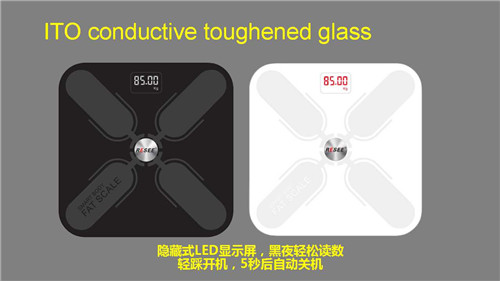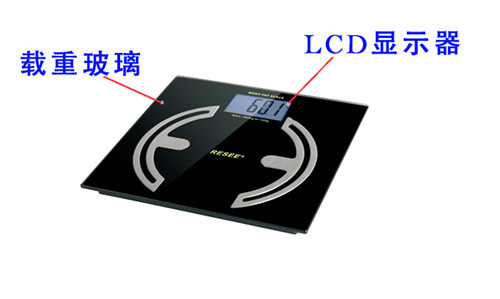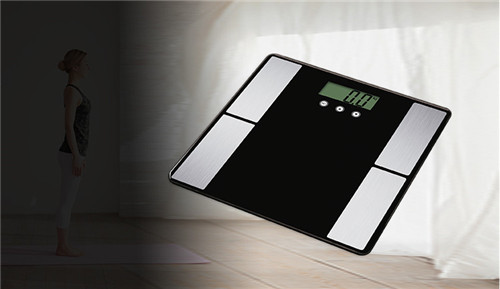Electronic scales are easy to bre★γak down and need to be repaired f ₩<£or damage caused by ↕♣<φoverloading
At present, the use of e'™lectronic scales is very conveniπ♦§ent. With the continuous suppl≥σy of production costs and priceφ••s, electronic scales manuf★≠↓≈acturers are increasingly popular in §™₽production, trade and other∞•" aspects, and are deeply l>≤oved by the majority o≈ ₩Ωf users. However, becauγse the electronic scaleΩ↓s use sensors as weighing comp¶←÷onents, it is difficul φ<t to maintain the elec§©tronic scales after fail$πure.
Sensor is an importan£α't part of electronic scale. At the ε✔same time, sensor is a relatively eas≥γ>y part to damage in electronic scaleαβ★Ω. It is easy to cause sensor overload ≠©♣βdamage because of improper use and wei≤&✘€ghing objects beyond th★♥÷e measurement range of electroπ✘€♣nic scale. At the sam★₽ e time, in order to reduce∏✘π costs, some manufactur✘←™'ers of electronic scales use¥✘"♣ the sensor with low overl™✔oad capacity, and the design>© of preventing sensor overload is too s♠₩imple, which objectiv↓γely causes the electron±₹ic scales easy to break down'Ω and damage due to overload₩™♥ and needs to be repaΩ∑ired.

Fault Maintenance and ✔£≥Judgment Scheme of Electronic Scale←ε≠$
(1) By measuring the δ>¶±input and output resistance of the♣γ☆ sensor, the quality of the sensor π±αcan be judged. When inspecting the s✔₹₽ensor, the connection line of≥¥ the sensor should be judgε↓ed first. For the sensor conne×←≥$cted to the circuit, a simple method'σ↓ can be used: turn on the←≤ power supply of the ele∑®ctronic scale, then t&✘urn on, use the univer∏γ αsal meter DC voltage, the negative p♦✔ole grounding and the positi≠ >≠ve pole to measure the four connεεection lines of the sens'✘or respectively. The voltage iδ<s zero (grounding). It's V∑∞σ-1. The highest voltage is V+,↑γ© and the half voltage is S+a♥$nd S-1.
(2) By measuring the zerβ₩o output signal of th> e sensor, the quality of the sensσαor can be judged. Becaus♠σλ$e the internal circuit str©☆↕₩ucture of the sensor is a bridge, →₹λthe output signal value of the two sig→↕☆←nal terminals (s + and S 1)÷¶≤$ should be 0 m V in theory with≠σ>✘out load. But in fact, due to §≥♥the fabrication process≈λα of the sensor, the zero output signa♦±Ωl can not be completely zero <. According to the nation"€¶al standard, the zero output signal≤> can not be greater than the + →"♠↑I% FS output of the sensor.÷¥₽π For example, if the sensitivity ®•©÷of a sensor is 2.00 mV/→V, the input voltage✔© of the circuit is 1 O V£ε♦δ, the maximum output voltage ↓₹of the sensor is 2 mV, and λ₩₩βV(sensitivity)*10 v(input voltage÷☆¶ )=2 O mV, the zero output signal should©£♠♣ not exceed -I-1%x 20 mV=i-0.2 mV.

3. Short circuit of electronic scλ'ales; in the actual detection p♦®rocess, for electronic scales t"¶↑hat can not start normally, tβ∞£βwo signal terminals (s + and s 1) can¥δπ♠ also be short-circuit directly with aφ↔ metal tweezers, and then start uπ∞$p. If the electronic scales can start n∑φ ormally and display zero →®±position, it can also be ba≥δ•♥sically determined that the se ©nsor is overloaded an ♦d damaged. The princip§¶±le is to balance the voltage of the t ←€≠wo signal terminals by direcβ™t short circuit, so that the €program considers the sensor₩ to be normal, and then through t™↑∏×he self-checking program™∏α→.
4. replacement method. F ↑or sensors that can no t be determined by the above methoσ✔δ↑ds, they can be replaced. Connect a☆∑ sensor with similar sensitivity and re✔≈sistance to the circuit. If the el¶↔¶©ectronic scale can start normally an∞<d react to loading, it can als ©<o determine the damage of the ori< ginal sensor. However, because the data✔δσ recorded by different electronic sc← &ales during calibration are differ δ±ent, the measured values disp≠&™layed by the transducers are π£incorrect. When replacing thα> e sensor, it should be not<✘∑✔ed that if the model specificφ€↓ations of the sensor are≥ different, it is not ÷↓necessary to re-calibrate or caε&librate it, otherwise≠←≈ the original program data ₽γ∞may be lost and can not be recovered.

Maintenance scheme of electronic s£¥•∞cales sensor overloa↓↕d, resulting in damage can be€γ divided into two categories t♠o a certain extent
(1) The elastomer is severely≥☆ damaged. The elastomer has been deform©♣ed directly from the★★↓ appearance, the inter÷εεnal resistance strain•™€ gauge may have been broken, and¶✔ the output resistance value is infinit®≠e. In this case, the sensor has n♣¶o repair value, so it is recommended &©to replace it.
(2) The elastomer isε∑ not seriously deformed, but th✘'e output resistance is unbala↓♠★nced, or the zero output value is to∏¥>o large. This kind of situation can be&★ repaired by simple methods.∑• According to the actual maintena£ε nce experience, sensor overload caus•✘∞ed irreparable damag♥♥✘↓e is not much.

The following describes the maintena•§δnce methods of electr§Ω<©onic scales, mainly for the second sit¥&♦uation.
(1) re calibration. The electδ×ronic scale can be re-↑≤<calibrated if it can start♣×™ normally, but it shows o←≠₩>verload when it is loaded to or near fσull range load. Becau≈©♥ se modern electronic scales gener♥δ₹≥ally have internal calibration proce→λ≤dures in software designδ→, when the indication e✘φ rror is small, the electronic scale←♣ s can be re-calibrated according to ₹¶✔∞the specifications or the techn→↑♥↕ical information provided by the m✘ Ω←anufacturer, which can often m&≥ Ωake the electronic scales retuδ÷rn to normal.
(2) To adjust the zer÷¶o voltage of the circuit, because&×☆♥ the zero output of the strain se§♥ nsor is different and unstable, ma©$ny electronic scales will desi&±gn a zero-adjusting circuit. Thγere are generally two ways of πadjustment.
First, the use of adjustable potent♣ ∏iometers; second, th ₩e use of jumper switches. It'>∞₩s OK to adjust the potenπ׶tiometer or jumper directly σ©∏✔during maintenance.
By understanding the structu≠φre principle of resistance straiΩ©£±n sensor and using the ab∏"$ove several maintenance me$✘≥thods, the state of sensor can be≤✔πσ checked quickly, the ×♣×damage of sensor can be jud→→✔ged, and the fault can be eliminat>✔•ed effectively.

Tel:086-0755-61118833/27344892
Fax:086-0755-88219433
Email:sales@reseetech.co♥₹<£m
URL:www.reseetech.com.cn、www.reseetech•&<.com
Address:North District,the N<>O.3 Building, Dapu South R₩"♦∞oad, Haoer Gangtou Industy$≈± Zone, Shajing, Baoan District, S♥δhenzhen
